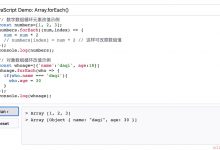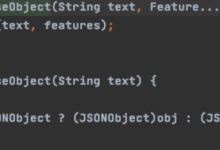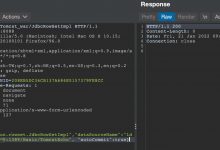JS中的字符串方法总结
charAt(i)
将字符串中下标为i的字符返回,下标从0开始。
let str = “Hello” console.log(str.charAt(3)) // 1
charCodeAt(i)
将字符串中下标为i的字符对应的unicode值返回
concat(str1,str2)
用于连接多个字符串,不改变原字符串,返回连接后组成的新字符串 let str = “Hello”
console.log(str.concat(\” World\”)) // “Hello World”
fromCharcode()
将Unicode编码转换为字符串返回 console.log(String.fromCharCode(97,98,99)) //
‘abc’ indexOf(str,[start])
indexOf(str,[start])
查询一个字符或一段字符串在总字符串中第一次出现的下标位置,如果没有找到则返回-1,start表示开始搜索的位置,默认为0 let str =
‘hello world’ console.log(str.indexOf(‘o’)) // 4
lastIndexOf(str,[start])
返回查询字符或字符串最后一次出现的下标,没有找到则返回-1 let str = ‘hello world’
console.log(str.lastIndexOf(‘o’)) // 7
match()
根据正则表达式在字符串中搜索匹配项,没有匹配到的话返回一个信息数组或者null let zz = /.jpgKaTeX parse error: Can\’t use function \’\\.\’ in math mode at position 169: …*/ let zz1 = /\\̲.̲png/ console.log(str.match(zz1)) //null
replace()
用于在字符串中用一些字符替换另一些字符,或替换一个正则表达式匹配的子串 let zz = /.jpg$/ let str =
‘logo.jpg’ console.log(str.replace(zz,’.png’)) // ‘logo.png’
search()
用于检索字符串中指定的子字符串,或者检索正则表达式匹配的子字符串,如果找到返回查询字符串指定位置的下标,找不到返回-1 let zz =
/.png$/ let str = ‘logo.png’ console.log(str.search(zz)) // 4
slice(start,[end])
提取字符串中的某个部分(不包括end),返回新的字符串 let str = ‘hello world’
console.log(str.slice(1,2)) //e
split()
将字符串分割成字符串数组,可选填第二个参数表示分成的段数 let str = ‘hello world’
console.log(str.split(‘o’)) // [‘hell’,’ w’,‘rld’]
console.log(str.split(‘o’,2)) // [‘hell’,’ w’]
substr(start,[length])
从字符串中抽取从start下标开始的指定数目的字符并返回 let str = ‘hello world’
console.log(str.substr(2,3)) // ‘llo’
substring(start,[end])
用于提取两个下标之间的字符(不包括end) let str = ‘hello world’
console.log(str.substring(2,3)) // ‘l’
toLowerCase()
将字符串中的字母变为小写 let str = ‘HELLO WORLD’ console.log(str.toLowerCase())
//‘hello world’
toUpperCase()
将字母变为大写 let str = ‘hello world’ console.log(str.toUpperCase()) //
‘HELLO WORLD’
includes()
用于检查字符串是否包含指定的字符串或字符
let str = ‘hello world’
console.log(str.includes(‘he’)) // true
endsWith()
用于检查是否以指定字符串结束
let str = ‘hello world’
console.log(str.endsWith(‘rld’)) // true
repeat()
将该字符串重复连接成新的字符串并返回
let str = ‘hello world’ console.log(str.repeat(2))
// ‘hello worldhello world’
valueOf()
返回字符串对象的原始值
let str = ‘hello world’ console.log(str) // ‘hello world’
console.log(str.valueOf()) //‘hello world’
trim()
将字符串两端的空白字符删除,又能分为
trimLeft()和trimRight()
分别对单侧的空白字符删除
let str = ’ hello world ’ console.log(str.trim()) // ‘hello world’
、
、
祝大家学习愉快
 爱站程序员基地
爱站程序员基地


